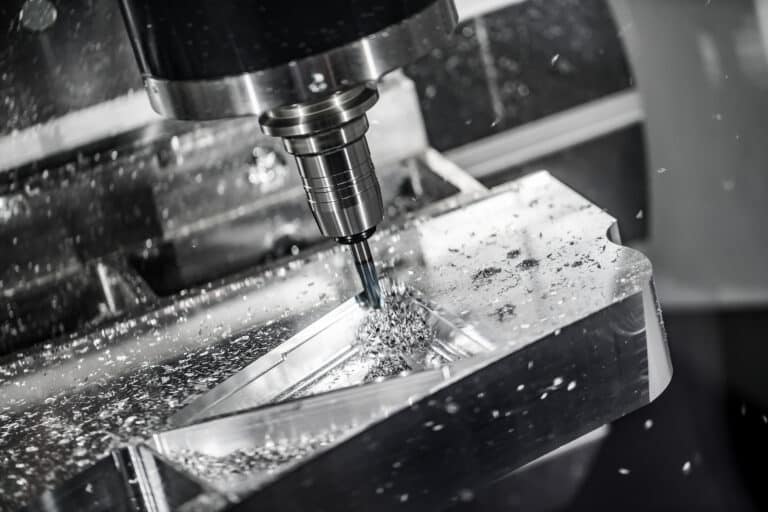Many businesses take a “fix it when it breaks” approach to production maintenance, believing it saves time and money. Yet reactive maintenance often leads to unexpected downtime, costly emergency repairs, and premature equipment failure. Beyond the direct costs, inefficient operations, lost productivity, and safety risks can silently drain profit. When it comes to production maintenance, a proactive strategy isn’t just an upgrade, it’s a financial safeguard.

Why Is Reactive Maintenance Used?
Run to failure (RTF) — where production machinery is operated without maintenance until it breaks — is still being used by 51% of manufacturers1. It is commonly applied to cheap or non-critical assets, or machinery with short life cycles, where immediate failure does not impact overall production. While RTF can be effective in specific, controlled situations, its broader application can lead to significant costs and risks, which is why it is quickly being replaced by predictive and preventative maintenance.
The True Cost of Reactive Maintenance
1. Increased Downtime and Lost Productivity
One of the most significant drawbacks of reactive maintenance is unplanned downtime. According to Forbes, unplanned downtime costs industrial manufacturers as much as €47 billion a year2. Each instance can disrupt production, leading to backlogs and delivery delays. In a busy manufacturing facility, a critical machine failure could mean hours or even days of halted productivity.
Equipment failure often requires extensive parts cleaning, repair, or replacement. Breakage of one part may also damage related components, such as bearings or seals. Over time, this can far exceed the costs of regular preventive maintenance.
Top Performing Plants Spend 3.5x Less on MaintenanceLearn how top manufacturers:
|
LEARN MORE |
2. Excessive Labour Expenses
Emergency repairs typically demand skilled technicians who charge overtime or after-hours fees. For example, an emergency repair on a machine during peak production can require a team to work through the night or on weekends, driving up payroll expenses and stretching staff resources.
3. Shortened Machine Life
Without preventive care, equipment exposed to continuous dirt, stress and wear will suffer from premature failure and a shortened lifecycle. Reactive maintenance may mean replacing expensive machines sooner than planned, raising capital expenditures.
4. Safety Risks and Liability Concerns
When equipment fails unexpectedly, it often poses significant safety risks to employees. Mechanical failures can lead to accidents and injury or environmental hazards. For example, a malfunctioning production machine might emit dangerous fumes, or broken parts could result in operator injury. These safety risks can also have legal repercussions, leading to higher non-compliance fines, insurance premiums or liability claims.
Alternatives to Reactive Maintenance
There are several machine maintenance strategies that offer substantial benefits, lower risks and cost. Before adopting one it is important to assess your current processes and the opportunities to improve cost, productivity, sustainability and compliance. Safetykleen’s experts offer a free on-site assessment of your parts cleaning processes and recommendations to improve them, all without obligation.
Preventive Maintenance
Preventive Maintenance offers a proactive, scheduled approach to parts cleaning where tasks are performed on a regular basis to reduce the likelihood of equipment failure. Scheduled maintenance is ideal for extending the lifespan of equipment, ensuring that parts like filters, fluids, and belts are cleaned or replaced before they fail.
Predictive Maintenance
Predictive Maintenance uses technology and data analytics to predict when equipment is likely to fail. Sensors monitor conditions such as temperature, vibration, or oil quality to detect early signs of wear or the need for maintenance. This is particularly beneficial for high-value equipment, as it optimises productivity while extending machine life.
Condition Based Maintenance
Condition based Maintenance involves monitoring the condition of equipment and performing maintenance only when specific indicators, such as lubrication levels, temperature, or pressure, suggest that maintenance is necessary. This data-driven approach allows maintenance to be tailored to the machine’s needs, reducing unnecessary cleaning and maintenance while preventing breakdowns. This is particularly useful in large plants, where extensive equipment monitoring can provide real-time insights into machine health.
SOURCES
Is parts cleaning important?
The simple answer is, yes. If your business uses machines of any sort and you don’t keep those machines clean, it’s likely that inefficiency and breakdowns will quickly start to cost your business time and money. Regular parts cleaning is an essential part of maintenance, both because it removes dirt and contamination that might impact operation, and because it allows you to examine the machine for signs of wear and tear that might lead to breakdown if left unaddressed.
Are parts washers worth it?
While they may seem expensive at first, parts washers can save your business significant time and money. The automatic parts washers used by Leonard Helicopters have been shown to save up to 60 minutes on a single cleaning operation, to reduce reported issues with incomplete cleaning by 75%, and to provide energy savings of up to 20%. Even if workspace is limited, a small high-pressure parts washer can clean up to 10 times faster than a standard manual machine.
What are the risks of parts cleaning?
If you’re cleaning by hand with rags and brushes, parts cleaning can be a risky business, and certainly requires specialist PPE to be worn. Using solvents, which are often flammable, hazardous and release VOCs (Volatile Organic Compounds) into the air, is inherently dangerous for operators and the environment. And there’s also a risk of injury to those doing the cleaning, both from handling potentially heavy, awkward parts and from contaminants like metal swarf and grit.
Do ultrasonic cleaners really work?
Definitely! Ultrasonic cleaning provides a highly efficient precision cleaning solution for parts and components, and its effectiveness has been validated across a wide range of industries. The technology has developed to be both robust and efficient, and can easily be adjusted to cater to specific business demands. Similar to other automatic parts cleaning approaches, it’s an excellent way to generate long-term cost savings and boost productivity, particularly because it minimizes the need for staff involvement in cleaning, even on a large scale.

![[Free Guide] How Top Plants Spend 3.5x Less on Maintenance](https://safetykleeninternational.com/wp-content/uploads/2025/05/How-Top-Plants-Spend-Less-Produce-More-2-285x300.png)


